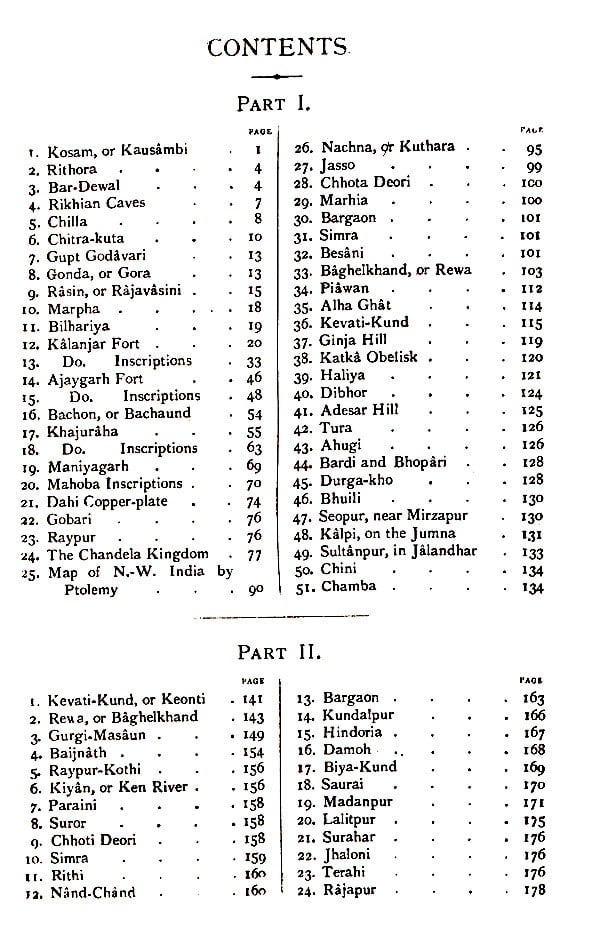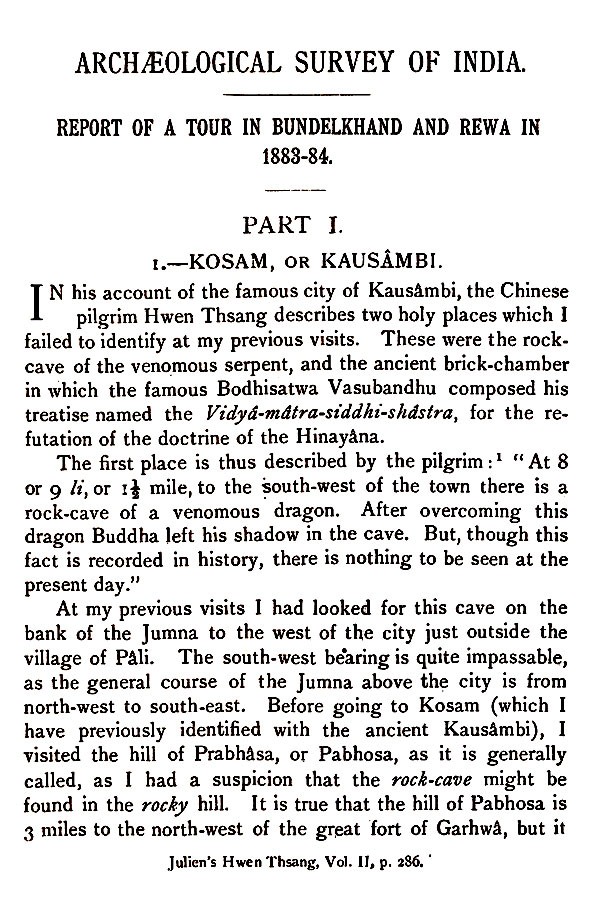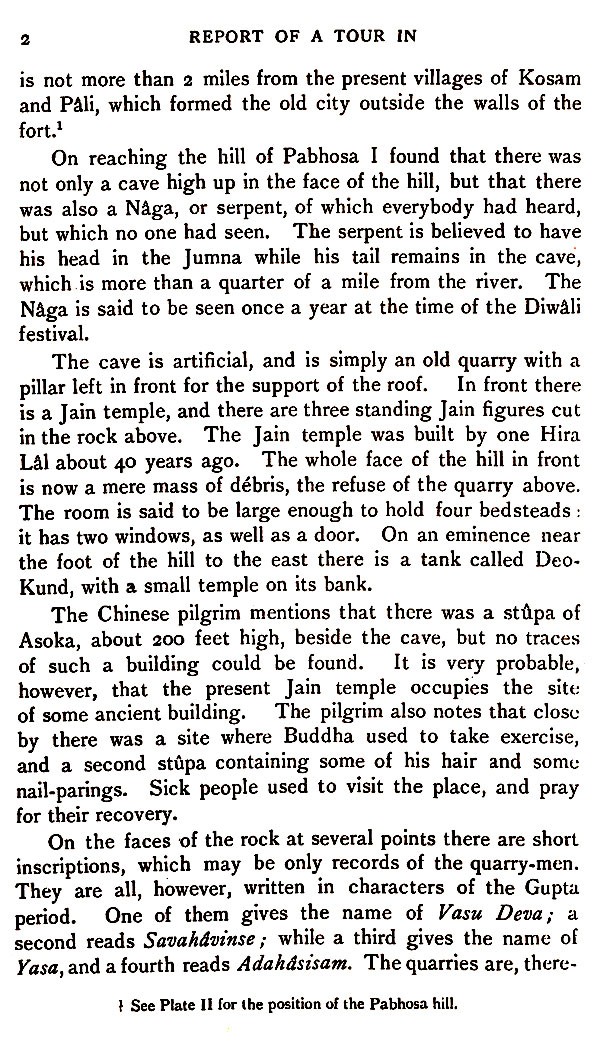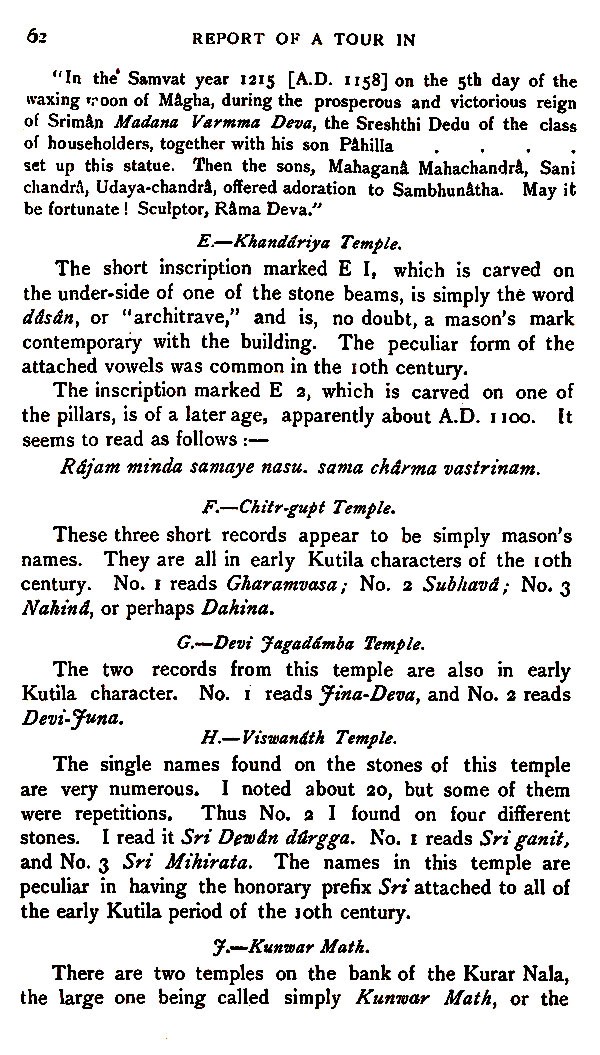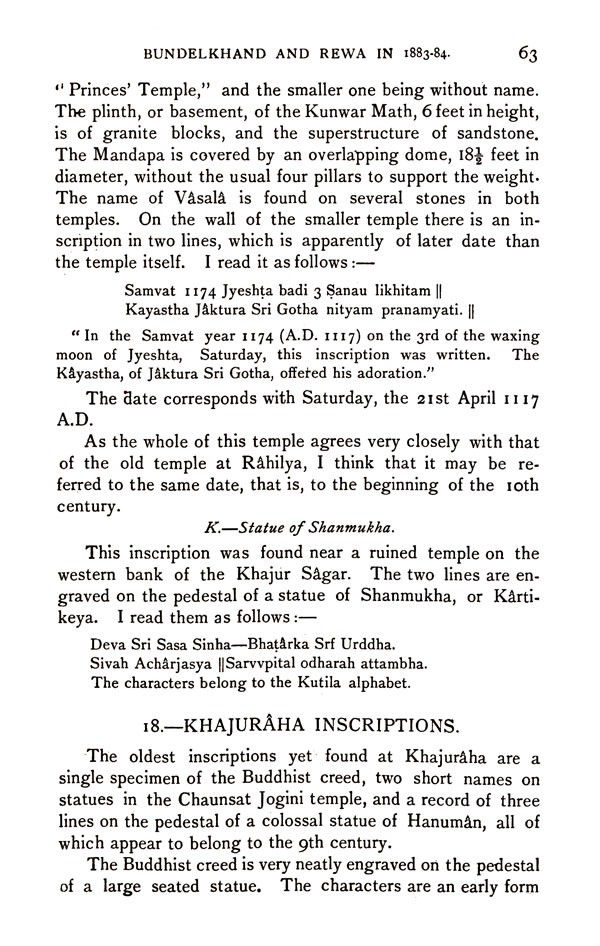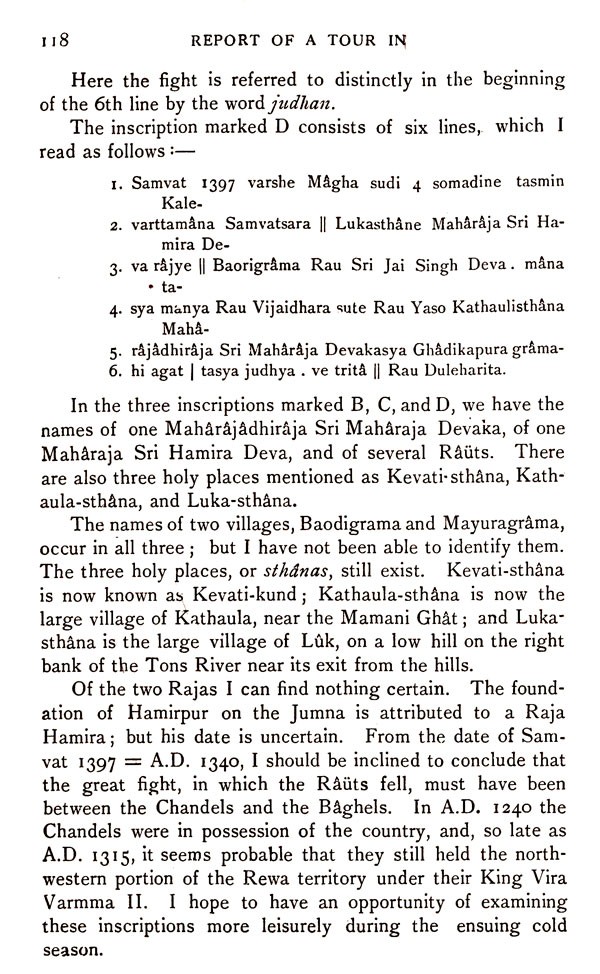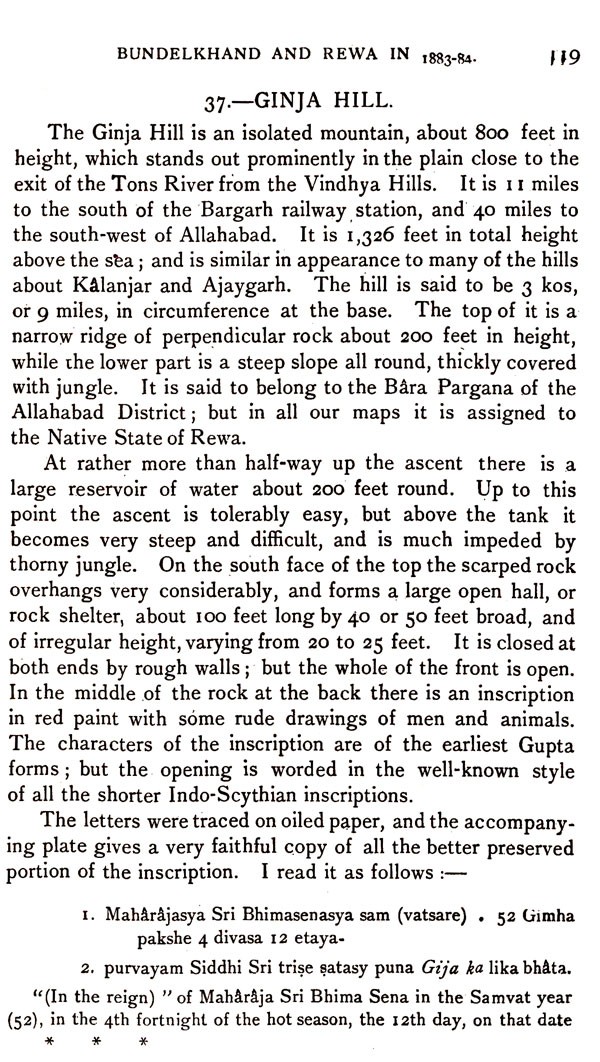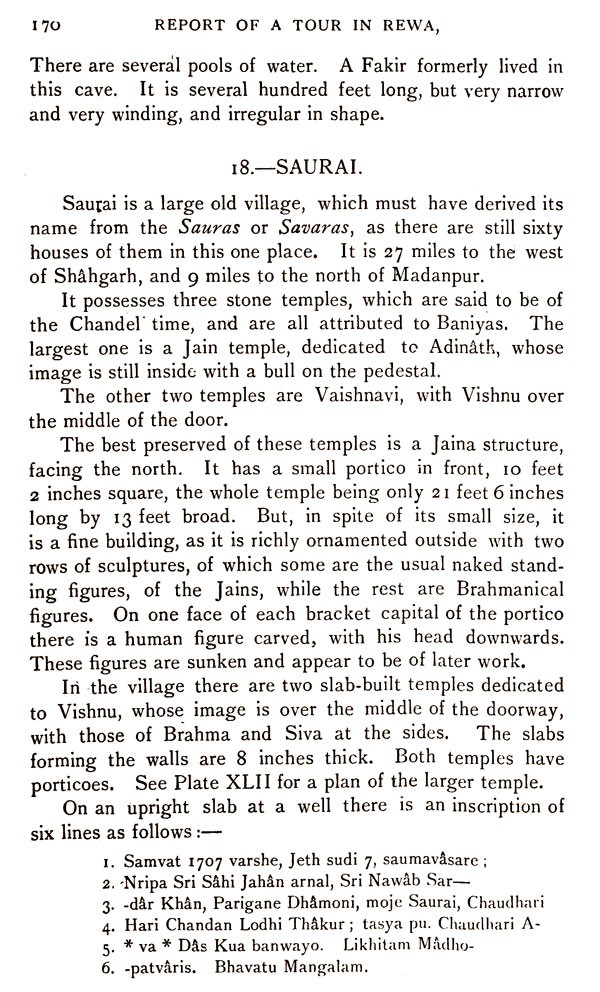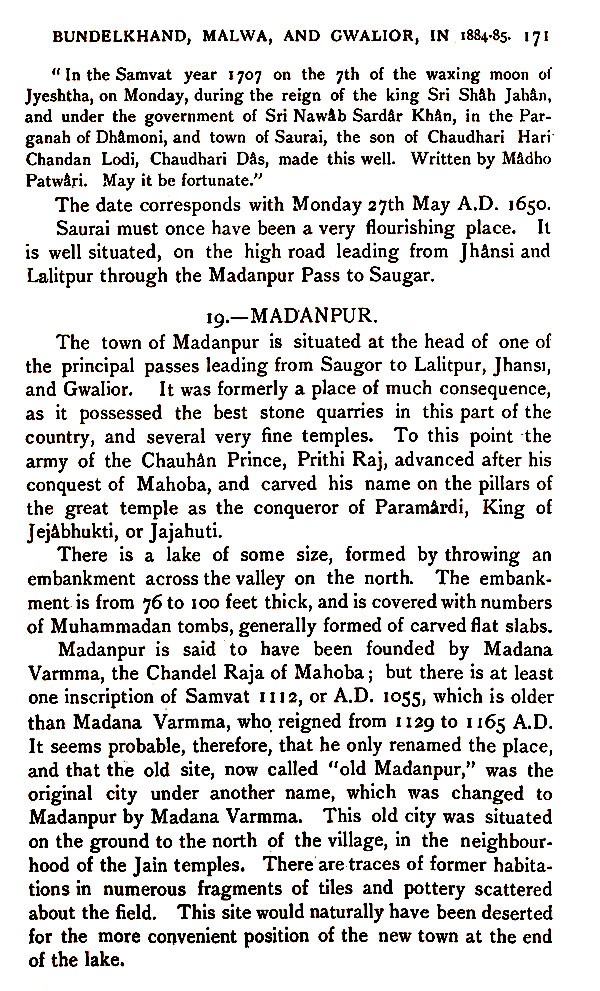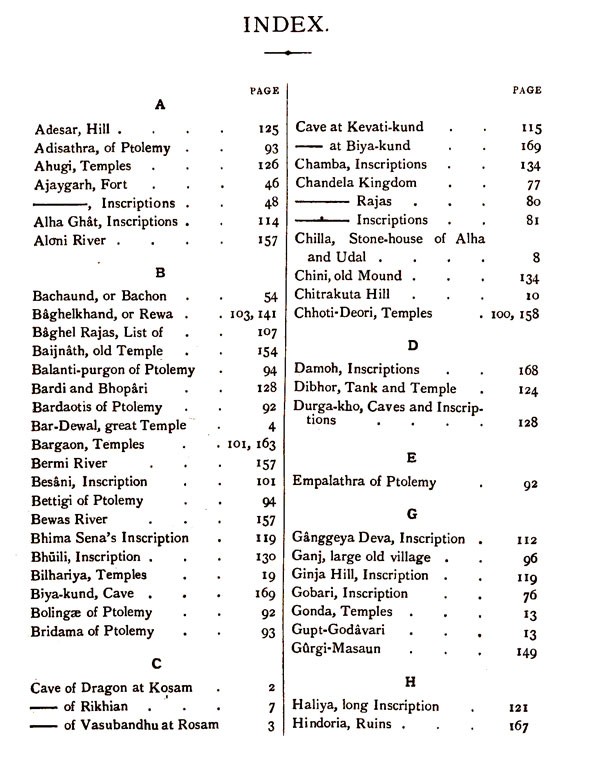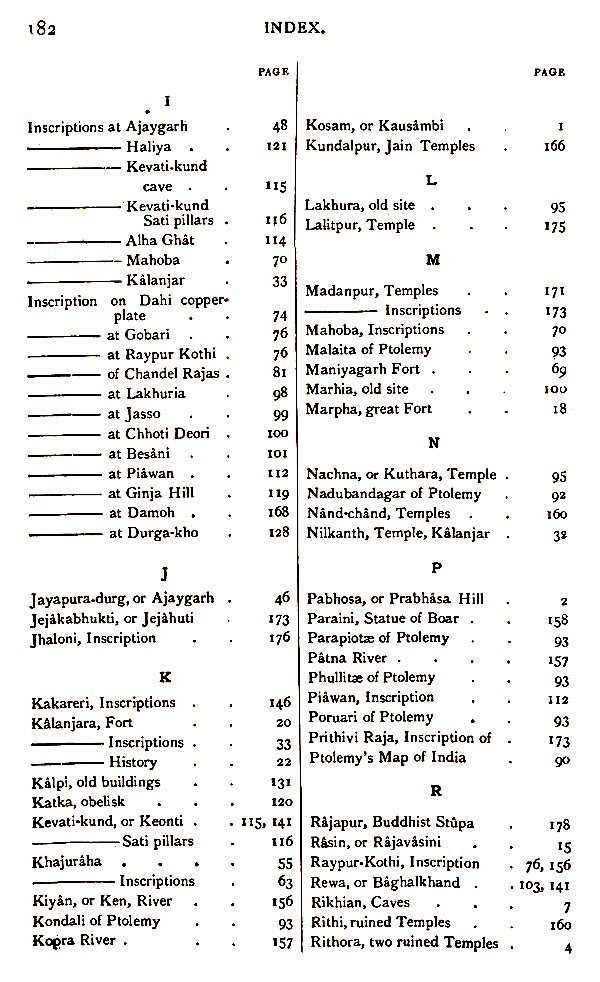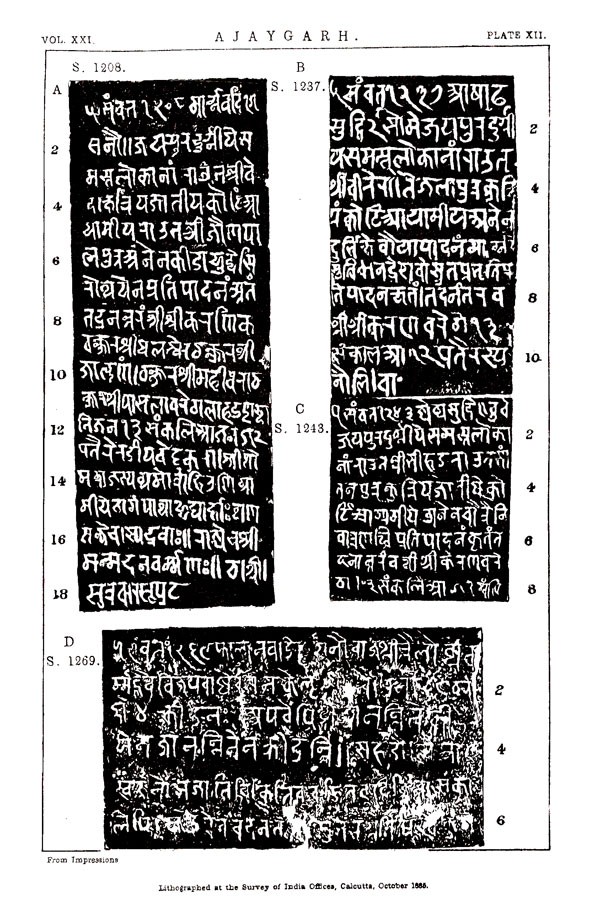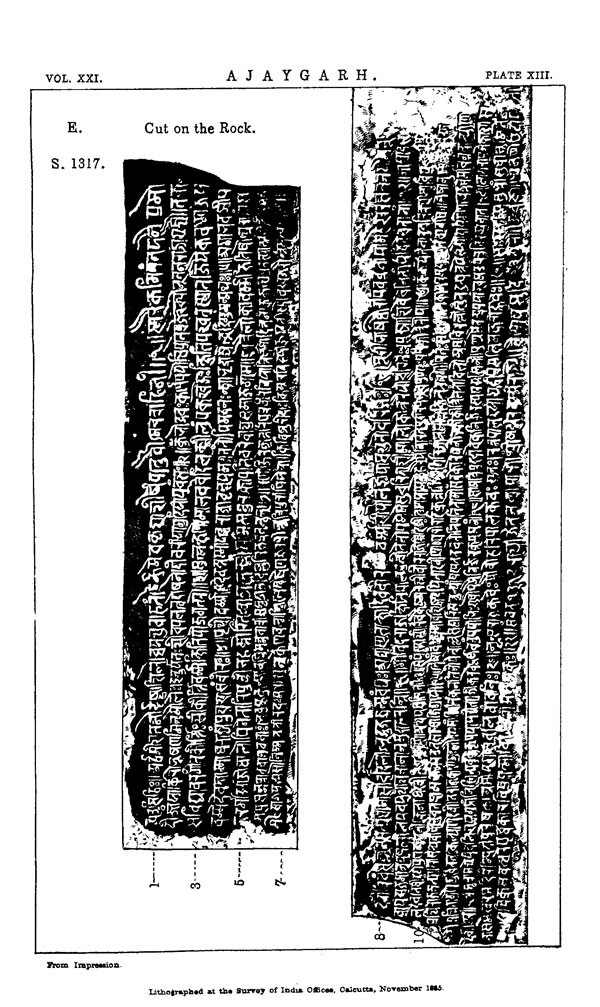
ASI Report of A Tour in Bundelkhand and Rewa in 1883- 84 and of A Tour in Rewa, Bundelkhand, Malwa, and Gwalior, in 1884-85 (Volume- XXI)
Book Specification
| Item Code: | AZB501 |
| Author: | A. Cunningham |
| Publisher: | ARCHAEOLOGICAL SURVEY OF INDIA |
| Language: | English |
| Edition: | 2000 |
| Pages: | 280 (Throughout B/W Illustrations) |
| Cover: | HARDCOVER |
| Other Details | 9.8 x 6.5 inches |
| Weight | 760 gm |
Book Description
IN this volume I have brought together the reports of my I last two tours in Bundelkhand and Rewa, during the cold seasons of 1883-84 and 1884-85. During these tours I visited many places which had not been reported upon by the officers of the Archæological Survey. The most notable of these places were the great forts of Kâlanjara and Ajaygarh, the strongholds of the Chandels of Mahoba, and their religious capital of Khajurána, which possesses the most famous collection of magnificent temples in Upper India. I have taken the opportunity of giving a complete account of all the Chandel inscriptions at present known. These continue the genealogy for several generations after the fall of Mahoba.
On the south bank of the Jumna, a short distance above Allahabad, I visited a large ruined temple, which had been seen and sketched about 50 years ago by Major Kittoe, who calls it the shrine of Karkotak Nâg.
At a short distance, on the way towards Allahabad, I visited a stone building at Chilla, which is said to have been the dwelling-house of the two Banâphar heroes Alha and Udal. It is surrounded by a fortified enclosure, and is important as being one of the very few old dwelling-houses that now exist.
in Rewa I made the discovery that the whole valley of the Tons River had been held by the Kalachuri Rajas of Chedi for at least two centuries prior to the advent of the Bâghel Rajputs. In the previous year my Assistant Mr. Garrick had found a short inscription on rock near the northern boundary of Rewa giving the name of Gânggeya Deva, the Kalachuri Raja of Chedi, in the beginning of the 11th century. The name of his son Karna Deva is still remembered by the people in connexion with the fort of Gûrgi Masaun, the old capital of the district. Its foundation is attributed to Karan Dahariya, or Karna Dahaliya, Dahal being a well-known name of Chedi. Raja Karna reigned in the middle of the 11th century. Another inscription of the Kalachuri kings was found by my servants on a slab in one of the northern passes of the Rewa territory. It bears the name of Râja Nara Sinha Deya Dahaliya, and is dated in the Samvat year 1216, or A.D. 1159. Two later names are preserved on copper-plates belonging to the large village of Kakareri, also in northern Rewa. These are Jaya Sinha Deva in A.D. 1175, and Vijaya Deva in A.D. 1196. I have found no traces of the Kalachuri kings of a later date than the last, even in Chedi itself. I conclude, therefore, that the Bâghel Rajputs, who now hold the country, must have obtained possession in the very beginning of the 13th century. This is rendered absolutely certain by the mention of two very curious names as the rulers of the country in the middle of the century. These names are given by the Muhammadan historians as Dalaki wa Malaki, which I have identified with the two contemporary princes of the Bâghel chronicles called Dalkeswara and Malkeswara.
**Contents and Sample Pages**
